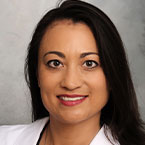By: Greg Canty, MD, FAAP & Jennifer King, DO, FAAP
Cheerleading has moved from supporting teams on the sidelines to become a challenging sport all its own. Children, teens and young adults participate in a wide range of cheer squads and styles that build strength, skill, teamwork and community.
AAP policy explained
Like any athletic activity, cheer comes with a chance that children and teens will get hurt. But there are sensible ways to manage these risks and keep the fun in cheer. Based on updated
recommendations from the American Academy of Pediatrics (AAP), here's what parents, caregivers and families need to know.
How cheer became an organized sport
Cheerleading got its start in the early days of college football, when mostly male squads led crowds in the stands in chants of support. By the 1990s, cheer had become a spirited blend of dance, tumbling and stunts that welcomes kids as young as 5 or 6.
Cheerleading continues to grow in popularity. Kindergarten-age children can participate in "mini-cheer" squads sponsored by community and private programs. Older kids and teens may join school cheer squads or competitive all-star teams affiliated with private gyms. Although not all cheer groups compete, many school and all-star squads showcase their skills in district, state or even national contests.
Cheer as a sport continues to evolve. For example, a newly emerging category called
STUNT focuses on the technical and athletic elements of cheer such as partner stunts, pyramids, tosses, jumps and tumbling. In addition, both the U.S. and International Olympic Committees have also recently recognized cheer as a sport. This sets the stage for future growth.
A physically demanding athletic activity
Cheer is a year-round sport for millions of young athletes who spend hours each week practicing tumbling skills, jumps and complex stunts. Many attend training camps and workshops and follow busy practice and competition schedules.
With more time spent in the sport, there are more opportunities for injury. One estimate shows that around 35,000 cheer athletes are hurt each year, with most in the 12-to-18 age group. However, injuries have been growing in the 6 to 12 age category. Injuries are more likely to happen during practice or competitive events than game-day performances or community events.
The good news: data from U.S. high schools shows that cheer leads to fewer injuries than other sports. Unfortunately, though, kids who do get hurt may take a significant time to recover.
How do cheer athletes get hurt?
Overuse injuries
Cheer athletes can suffer
overuse injuries. These develop bit by bit when the same parts of the body are repeatedly stressed. Examples include:
Stress fractures in bones that weaken or crack from constant impact
Painful or swollen tendons near a joint (tendinitis)
Growth plate injuries that harm a special layer of tissues near the end of a leg, arm or other long bone. Injuries to these areas can interfere with healthy bone growth.
Traumatic injuries
Cheer athletes also experience sudden injuries, sometimes called
acute or traumatic injuries. These may happen after hard or awkward landings, collisions with other kids or falls from riskier stunts like pyramid-building or basket tosses. These injuries may include broken bones, ligament sprains, or muscle strains. The most commonly injured joints are the ankles, wrists and knees.
Concussion risk in cheer
Risks for
concussion—a hit to the head that can damage the brain—are a serious concern in cheer and spirit programs. Data from U.S. high schools have found the most commonly injured body site is the head and neck, and that 31% of reported injuries are due to concussion.
Concussions can happen whenever a cheer athlete lands hard on the play surface, collides with another athlete or runs into nearby equipment. Most athletes with concussions recover in a week or two following rest and activity modifications. Unfortunately, some concussions do last longer. All kids with concussions should follow a gradual, supervised
return to sport. Young brains continue to grow and develop until the mid-20s, so preventing and managing concussions is key for future brain health.
AAP recommendations for safe, successful cheer & spirit programs
With the right supervision, staffing and support, cheer programs can help kids build leadership, strength and team skills while minimizing injury risk. Parents and families can help by making
these basic prevention steps part of every young athlete's routine.
10 key points to maximize safety (and fun!) in cheer
School-based cheer programs in all 50 states should be overseen by state associations and school athletic departments. (As of 2024, just over half of states track cheer programs and sets safety, coaching and equipment standards.)
Cheer coaches should be trained and certified in safety techniques, especially spotting. This ensures safety and provide physical support for partner stunts and other advanced moves.
Cheer programs should consider the age and skill level of participants before introducing new techniques so all can participate safely.
Cheer stunts, skills and events should never take place on concrete, asphalt, dirt, vinyl floors or surfaces that are wet or uneven. Safe surfaces reduce the chances that athletes will get hurt.
Pyramids should not go above the height of two participants, and spotters should always be present to steady kids during flying moves or dismounts.
Written emergency action plans should explain exactly what will happen if a cheer athlete gets hurt. Every school, gym, coach, athlete and family should have a copy of the plan and know what to do in an emergency.
Kids should have a preparticipation
physical exam before starting cheer or spirit programs so that doctors can open a family conversation about risks, benefits and safety.
Cheer events should be in venues that comply with safety rules set by
USA Cheer, the National Federation of State High School Associations (NFHS) or the
U.S. All-Star Federation.
Coaches, athletes, parents and others in cheer programs should learn the signs and symptoms of concussion and how to seek care for athletes. Athletes with concussions or other serious injuries should not
return to cheer until they have received clearance from a medical professional.
Kids with disabilities can do cheer, too! Parents and athletes can learn more about getting involved from
ParaCheer International.
Supporting general health & wellness
It is also important to help prevent other risks to health and well-being that cheer athletes may face.
Promoting positive body image & healthy nutrition
Cheer athletes have sometimes felt pressure to have a certain physical appearance. This can raise their risk for negative body image. In addition to affecting mental health, this pressure can lead to not eating enough. Poor nutrition and too few calories can affect bone strength and interfere with a healthy menstrual cycle.
Participants, parents, and coaches can help reduce these risks. Avoid language that suggests participants should conform to a specific body type, for example, and choose uniforms that are inclusive for all body shapes and sizes.
Preventing abuse & misconduct in cheer
Cheer programs must be safe, supportive, encouraging places for all kids.
The U.S. Center for SafeSport offers training and model policies to help protect young athletes from sexual abuse, physical abuse, emotional abuse, bullying, harassment and hazing. Cheer programs (and the cheer community as a whole) must make it safe for athletes to anonymously report possible misconduct or abuse. This article on abuse prevention offers helpful advice for cheer parents.
More information
About Dr. Canty
 Greg Canty, MD, FAAP is the Medical Director of the Sports Medicine Center at Children’s Mercy Kansas City. He is an Associate Professor of Pediatrics and Orthopedic Surgery at the University of Missouri – Kansas City School of Medicine. Dr. Canty, a member of the AAP Council on Sports Medicine & Fitness and the Section on Orthopaedics, is lead author of the 2024 Policy Statement, "Safety in Cheerleading: Epidemiology and Recommendations." Greg Canty, MD, FAAP is the Medical Director of the Sports Medicine Center at Children’s Mercy Kansas City. He is an Associate Professor of Pediatrics and Orthopedic Surgery at the University of Missouri – Kansas City School of Medicine. Dr. Canty, a member of the AAP Council on Sports Medicine & Fitness and the Section on Orthopaedics, is lead author of the 2024 Policy Statement, "Safety in Cheerleading: Epidemiology and Recommendations."
|
About Dr. King
 Jennifer King, DO, FAAP, is the Section Chief of Pediatric Sports Medicine at Kapi'olani Medical Center for Women and Children in Honolulu, Hawaii. She is an Assistant Professor of Pediatrics at the John A. Burns School of Medicine, University of Hawai'i. Dr. King is a member of the AAP Council on Sports Medicine & Fitness and the Section on Orthopaedics and co-author of "Safety in Cheerleading: Epidemiology and Recommendations." Jennifer King, DO, FAAP, is the Section Chief of Pediatric Sports Medicine at Kapi'olani Medical Center for Women and Children in Honolulu, Hawaii. She is an Assistant Professor of Pediatrics at the John A. Burns School of Medicine, University of Hawai'i. Dr. King is a member of the AAP Council on Sports Medicine & Fitness and the Section on Orthopaedics and co-author of "Safety in Cheerleading: Epidemiology and Recommendations."
|